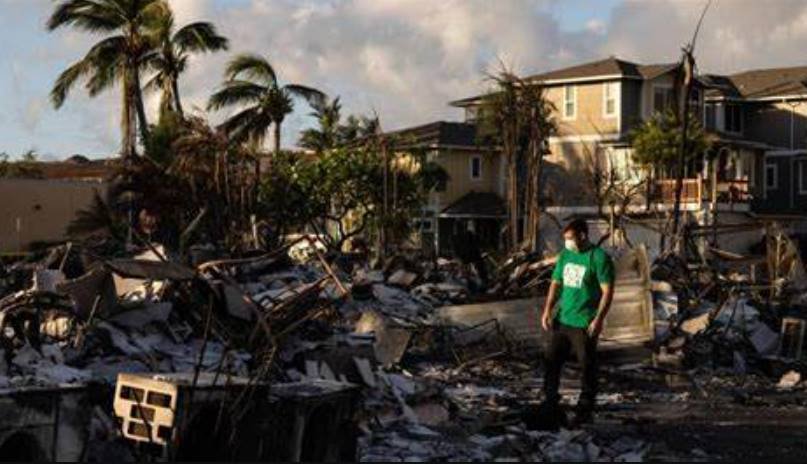The wildfires that ravaged the Hawaiian island of Maui last week have left behind a trail of death and destruction, with 93 confirmed fatalities and more than 2,200 structures destroyed or damaged. Authorities say the effort to count the losses and identify the victims is just starting, as they face the challenges of searching through the charred remains and dealing with the emotional trauma.
The wildfires were sparked by strong winds from Hurricane Dora, which passed south of the island chain on Tuesday, August 8. The winds knocked out power and grounded firefighting helicopters, creating favorable conditions for the flames to spread rapidly. The fires were concentrated in two areas: West Maui and an inland, mountainous region.
In West Maui, the fires reached the historic town of Lahaina, a popular tourist destination with a history dating back to the 1700s. The fires burned through dozens of homes and businesses, including on Front Street, a shopping and dining area on the National Register of Historic Places. Many residents and visitors had to flee to the ocean to escape the inferno, while some were rescued by the Coast Guard.

In the inland area, the fires threatened several communities, including Kula and Pukalani, where many farms and ranches are located. The fires also burned through parts of Haleakala National Park, a protected area that is home to endangered species and cultural sites. The park was closed to visitors until further notice.
How the authorities responded and recovered?
The authorities declared a state of emergency and mobilized hundreds of firefighters from Maui and other islands, as well as federal and military personnel. They also received assistance from neighboring states, such as California and Oregon, which sent crews and equipment. The authorities used water-dropping helicopters, air tankers, bulldozers, and fire engines to battle the blazes.
The authorities also set up evacuation centers, road closures, and family assistance centers to help the affected residents. They urged people to stay away from the fire zones and follow the official updates. They also warned of potential hazards such as downed power lines, gas leaks, and falling debris.
The authorities said they were able to contain most of the fires by Saturday, August 12, but some hot spots remained. They said they were shifting their focus from firefighting to recovery and assessment. They said they were working to restore power and water services, clear debris, and reopen roads. They also said they were conducting a thorough search for human remains and missing persons.
How the community coped and supported
The community showed resilience and solidarity in the face of the disaster. Many people offered their homes, vehicles, food, water, clothing, and other supplies to those who lost everything. Many people also volunteered to help with the relief efforts, such as distributing donations, cooking meals, cleaning shelters, and providing counseling.
Many people also expressed their gratitude to the firefighters and other responders who risked their lives to save others. They thanked them with signs, banners, flowers, hugs, and applause. Some people also donated money to support their work.
Many people also mourned the loss of lives and livelihoods. They held vigils, prayers, ceremonies, and fundraisers to honor the victims and their families. They shared their stories of survival, grief, hope, and healing. They vowed to rebuild their homes and communities stronger than before.